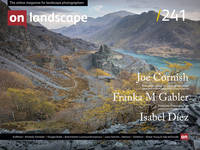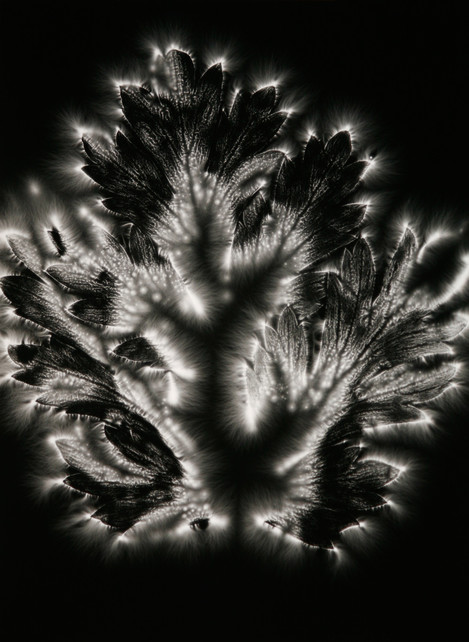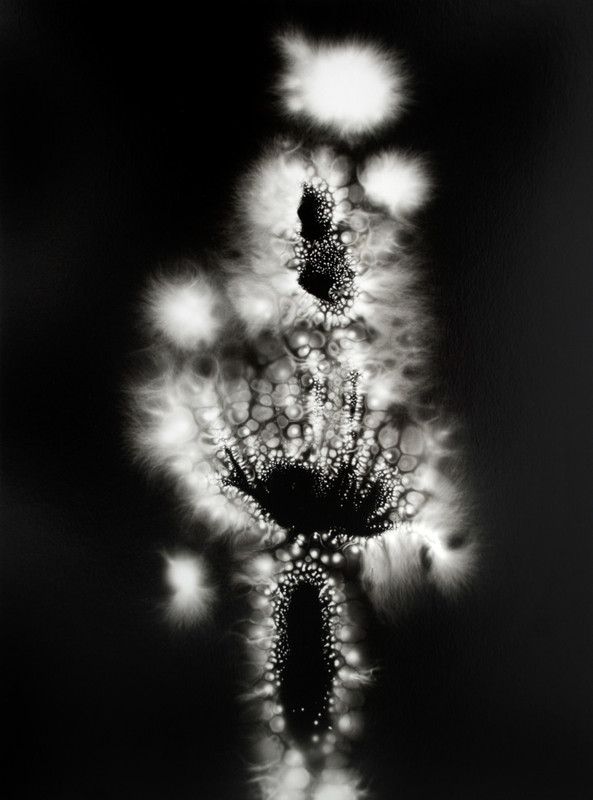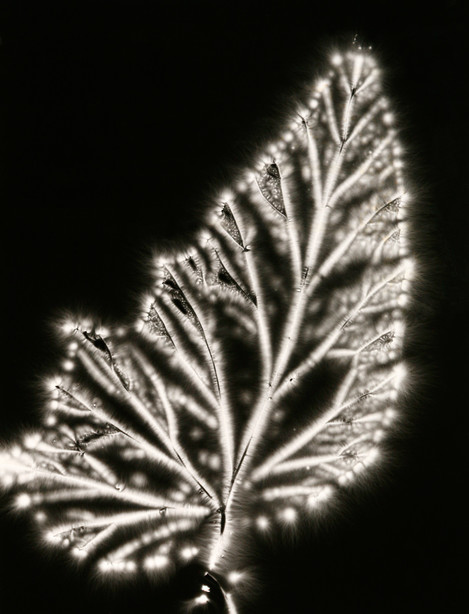Kimberly Schneider chooses one of her favourite series of images

Kimberly Schneider
Kimberly Schneider was born in Chicago, in 1977. As a teen, she was always taking photos, but it wasn't until she started working for a photographer in 1999, that she decided to make photography a career choice. She graduated from Colorado State University in 2002, with a BFA in photography (and minor in philosophy), and has been based in New York City for the past 15 years.
Kimberly lives and breathes photography, and is truly dedicated to the art of the handmade print; She not only prints all of her own work by hand, but also teaches (both privately and at Penumbra Foundation), as well as prints for others.
Schneider began making photograms due to having an unfinished darkroom at the time of the shutdown; In less than a year, she had nearly completed a trilogy of new (cameraless) work and began teaching some of her new processes (online). Her second online course is currently open for registration.
Her handmade prints have been exhibited at The Camera Obscura Gallery, San Diego Art Institute, Scott Nichols Gallery, Art Intersection, ZIA Gallery, Photo Méthode Gallery, Stonehenge Gallery, Troy University, Lightbox Photographic Gallery, among other galleries, and she continues to show her work regularly.
Kimberly’s new work recently placed 3rd in the 16th Julia Margaret Cameron Awards, as well as Honorable Mention in the 16th Pollux Awards; She looks forward to exhibiting 9 of the award-winning photograms in the upcoming 6thBiennial of Fine Art and Documentary Photography, which opens, at FotoNostrum Gallery - in Barcelona, Spain, on December 9th
Discovery is unrepeatable Being here All we see creates This presence in a Living stream of energy-Walter Chappell
In these strange days of covid, Walter Chappell’s Metaflora series seems especially timely. The late photographer referred to this series of equivalent images, as “light in total darkness…”
Considering the isolation that so many of us have been experiencing, for what feels like an eternity, I think a lot of artists are looking deeper within than they may have in the past, and whether consciously or unconsciously, are bringing more of that into their work. Further, I’ve always believed that the true test of great image is if it makes you feel something, and as someone whose only true outlet for stress is making art (aka printing the stress away), I think this series will resonate with those who might struggle with finding a proper outlet to deal with our new normal.
Like Chappell, I myself, am a spiritual printer with eastern leanings, who also dabbles in writing and other mediums. Given that I have spent the bulk of the past 15+ months making experimental, cameraless, gelatin silver prints (as well as utilising flowers, ferns, and occasionally plants, as materials), it almost seemed like fate to be reminded of this gorgeous body of work, via an email announcement from Scheinbaum & Russek1, right as I was narrowing down which image to write about for this end frame article.
This series speaks to me so deeply that rather than just write about a singular image, I opted to address a few of my favourite electron photographs from the series.
As much as I’d love to jump right in and start talking about the prints, one cannot address the topic of equivalent images without at least a brief mention of Minor White (and Alfred Stieglitz). White described his image making process as photographing things “for what they are, and what else they are.” While Stieglitz introduced him to the topic, with his series of Equivalents2, White expanded on it considerably. His work and his teachings centred around the emotive/spiritual quality of photography; Minor embraced and encouraged his students to use the medium, not only as a way of capturing what was immediately visible to the naked eye but also to reveal, what was not.
In 1957, Chappell, having met Minor previously, opted to move to Rochester, in order to do an in-depth study with him. This led to a collaboration on a series of articles they published together in Aperture, and a kinship was formed; while Minor captured the ineffable via infrared film, Chappell did so via electric, cameraless photographs.
Making his electron photographs in complete darkness, Walter found a way to capture a whole new life in these organic materials, essentially electrocuting them, in order to reveal the spirit/light within, as well as exposing the subtleties of some of these materials, that might otherwise be lost in the shadows, or at least be much more subtle, had they been made in a more traditional way.
Rather than getting too technical about his process, which I am still learning about, this musing is more about the spiritual and aesthetic qualities of a few of my favourite cameraless images from this series.
Camera vision operates as an intelligent function between the human eyes and the totality of understanding in a moment of active awareness. No camera is needed for this experience, only the keen sensibility of the human mind.Walter Chappell
These visual poems speak to me in different but similar ways. I appreciate the way that they are not only cohesive as a body of work, but also in spirit. The tonality of these images also feels a lot like infrared film (something that I’ve been specialising in for over 20 years; Discovering Minor White’s work while I was still fairly new to fine art photography/analog printing made a huge impact on mine, and basically changed my entire photographic trajectory) - and I’ve always thought of infrared film as a way of turning things inside out, so I really appreciate that quality as well. Further, when I look at these photographs, I can understand how Walter Chappell related his photography to music. Some of the subtleties that come through in his images almost feel like scales, with shadow and light gently melding together in some images, less gently in others, all lit from within in some way. [Unfortunately, I only had digital access to his images at the time of writing this.]
Bleeding Heart is an image that has haunted me for years. From the soft, feathery midtones to the rich shadows, to the gentle auras surrounding them, the tranquil beauty of this kirlian photograph has a layer of depth that I find extremely intriguing. It truly does resemble a bleeding heart, with the various layers of information appearing as arteries or veins (in lower res, the heart seems to have more of a sadness to it, and truly feels like remnants of a broken heart; in slightly higher res, it feels like a broken, yet healing heart).
Squash Blossom, Metaflora 9, might be my favourite image of the series. I’ve seen other versions of the Squash Blossom, but this particular version is what I consider to be, the true definition of equivalence. The what else it can be aspect of this ethereal, cameraless photograph is so significant, that I can’t decide whether it looks more like a hawk flying over a body of water or perhaps lava or if that’s a spider at the bottom, or if it’s a face. From a distance, it also resembles a human, and I’m sure many of you see other things in this print. Looking closer at the highlights and that pattern that was created in parts of them, they could be clouds, they could be land, the possibilities are endless...
Lately, I have become mesmerised with some of the details that come through ever so softly in Begonia Leaf; a glowing skeleton that reveals just a hint of shadow, in just the right places.
While I find the entire series deeply inspiring, that’s about all the space I have for this end frame article. I encourage those of you who find these digital representations inspiring to try to see the prints in person if you can, or at least get your hands on a copy of one of his books.
I’d like to close with a small request. Revisiting this work has been so inspiring, that I am currently in the process of trying to work out a way to safely use Walter Chappell’s process to make my own electron photographs. If any of you readers can advise on a set up that would be safe/doable in a small home darkroom, I would really appreciate it if you would reach out. Thanks in advance and happy printing!
References
- A photography dealer based in Sante Fe, New Mexico: https://www.photographydealers.com/exhibitions/walter-chappell-into-the-light/
- https://www.metmuseum.org/art/collection/search/267451




